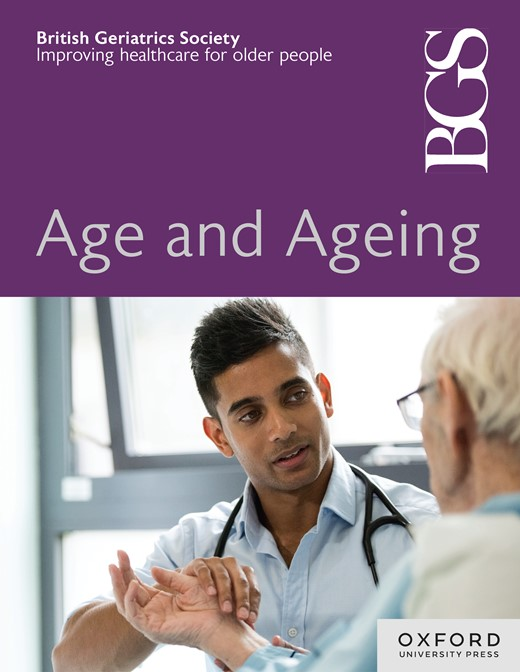Echocardiography In Acute Stroke - A Precious Resource
IF 6
2区 医学
Q1 GERIATRICS & GERONTOLOGY
引用次数: 0
Abstract
Background Echocardiography (Echo) is frequently utilized as part of the work up for ischemic stroke. National guidelines suggest using echo to assess for source of unexplained stroke “if detection of a structural cardiac abnormality would prompt a change of management”. This study aims to describe the use of Echocardiography post-stroke in Mayo University Hospital (MUH). Methods The study population was derived from a list of strokes admitted to MUH from July to December 2023 which was compiled by the Stroke ANP. The radiology system was consulted to assess time to echo and findings. Results 86 ischemic strokes were identified. 77 (89%) had echocardiography ordered as inpatient. 61 of 77 echoes ordered were filmed during admission. The mean wait for echo was 6.4 days. No PFO or LV thrombus was detected. In 52% (n=32) of echo’s performed for work up of aetiology of stroke there was no mention of intra-atrial septum (IAS) in the report. 24% had Modified Rankin Scale on discharge of 4 or above. Of these, 75% had echo ordered as inpatient despite 60% already having atrial fibrillation diagnosed. Conclusion Echocardiography appeared to be an over-utilised resource in ischemic strokes in MUH. The vast majority of patients with stroke, even if frail, elderly, or severely disabled, had echocardiography ordered despite national guidelines suggesting usage of echo only when diagnosis of structural heart disease was likely to change management. The intra-atrial septum wasn’t even mentioned in the majority of studies. The wait for echocardiography appears to be extending bed days for patients putting strain on hospital inpatient capacity and emergency departments. A more nuanced approach to ordering echo in the setting of acute stroke could be advocated for, this will take a collaborative effort between Cardiology and Stroke Medicine in order to prioritise that will most benefit from this precious resource.急性卒中的超声心动图--宝贵的资源
背景 超声心动图(Echo)常用于缺血性脑卒中的检查。国家指南建议,"如果发现心脏结构异常将促使改变治疗方案",则应使用超声心动图评估不明原因中风的来源。本研究旨在描述梅奥大学医院(MUH)卒中后超声心动图的使用情况。研究方法 研究对象来自梅奥大学医院卒中 ANP 编制的 2023 年 7 月至 12 月期间收治的卒中患者名单。研究人员还查阅了放射科系统,以评估回波时间和检查结果。结果 共发现 86 例缺血性脑卒中。77例(89%)住院患者接受了超声心动图检查。77 例患者中有 61 例在入院时接受了超声检查。等待超声检查的平均时间为 6.4 天。未发现 PFO 或左心室血栓。52%(n=32)的回声检查是为了确定中风的病因,报告中未提及房间隔内(IAS)。24%的患者出院时改良兰肯量表(Modified Rankin Scale)为 4 或以上。其中,尽管 60% 的患者已确诊心房颤动,但仍有 75% 的患者在住院时接受了超声检查。结论 超声心动图似乎是 MUH 中缺血性脑卒中患者过度使用的资源。尽管国家指南建议只有在诊断出结构性心脏病可能会改变治疗方案时才使用超声心动图,但绝大多数中风患者,即使是体弱、高龄或严重残疾的患者,都接受了超声心动图检查。大多数研究甚至都没有提到房间隔。等待超声心动图检查似乎延长了患者的住院日,给医院的住院能力和急诊科造成了压力。我们提倡在急性卒中情况下采用更细致的方法进行超声心动图检查,这需要心脏病学和卒中医学的共同努力,以便优先考虑从这一宝贵资源中获益最多的患者。
本文章由计算机程序翻译,如有差异,请以英文原文为准。
求助全文
约1分钟内获得全文
求助全文
来源期刊

Age and ageing
医学-老年医学
CiteScore
9.20
自引率
6.00%
发文量
796
审稿时长
4-8 weeks
期刊介绍:
Age and Ageing is an international journal publishing refereed original articles and commissioned reviews on geriatric medicine and gerontology. Its range includes research on ageing and clinical, epidemiological, and psychological aspects of later life.
 求助内容:
求助内容: 应助结果提醒方式:
应助结果提醒方式:


